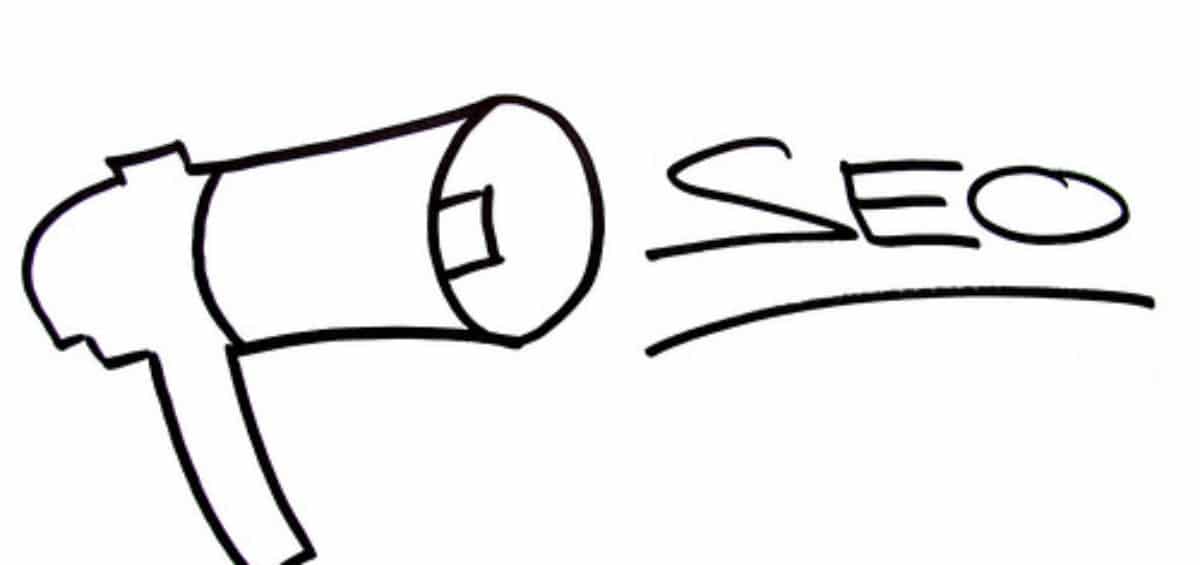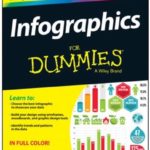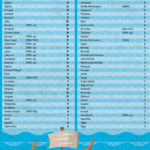Wanting to boost traffic to your site? It starts with visual marketing and optimizing your infographics’ SEO juice.
All marketers should arm themselves with SEO infographic strategies. Did you know infographics are shared three times more than other forms of visual marketing? Your goal with infographic marketing is to engage the audience and provide value. Never use an infographic SEO strategy solely for linkbait purposes. You can, however, cleverly use them to boost the SEO value of your website. When carefully designed and strategically used within a marketing plan, you can use an infographic to build premium links.
Social Media Today recently conducted a survey and created an infographic on visual marketing. More than 500 digital marketers participated, and the results confirm that visual marketing is here to stay. It has proven itself as one of the most effective forms of marketing. Marketers across the globe are continuing to allocate large portions of their budgets toward visual asset creation.
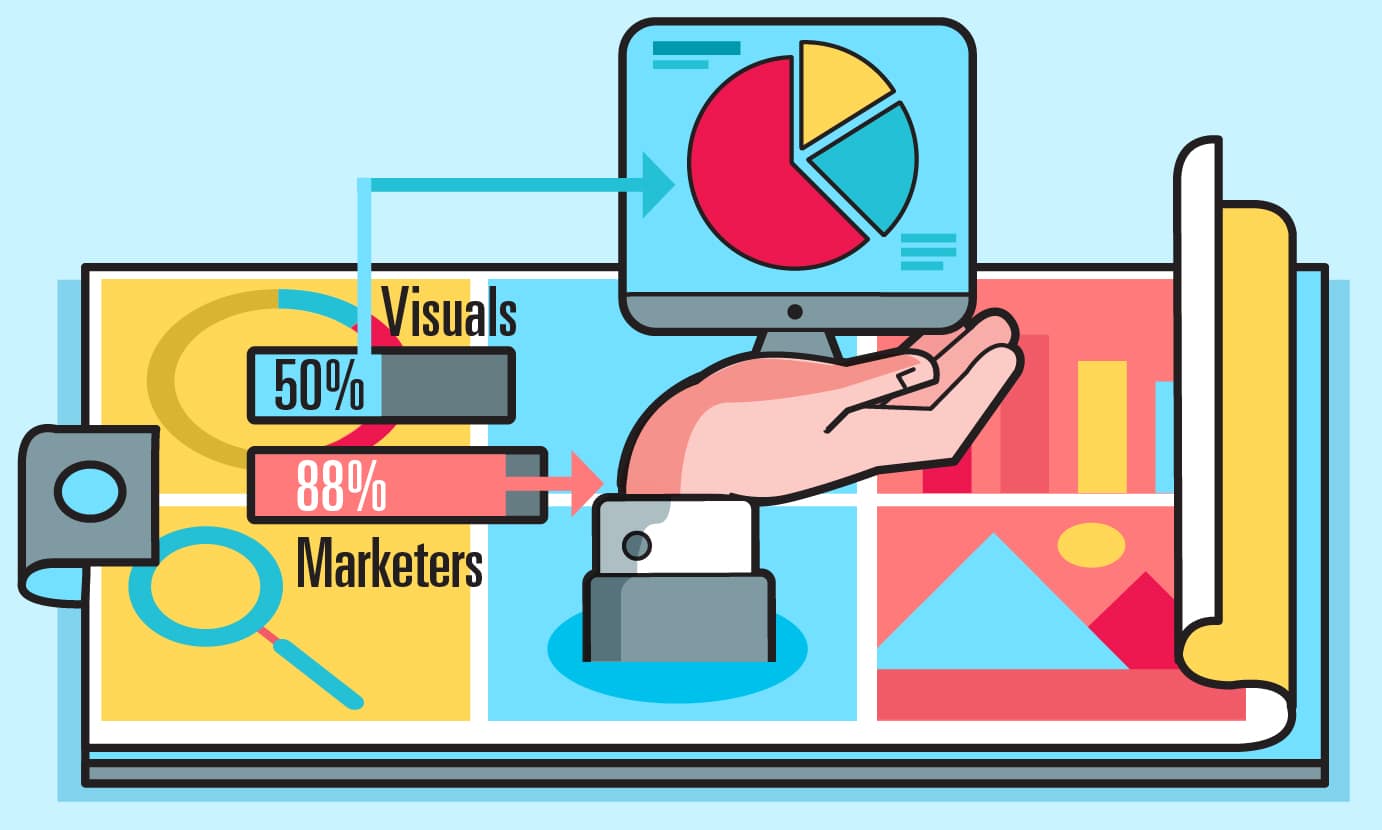
- 88% of marketers are using visuals in at least 50% of their published content pieces.
- 56% of marketers use visuals in 100% of their published content pieces.
- Stock photography is the most common source of visuals.
- Stock photography only drives engagement by 12%.
- Custom graphics boost engagement by 40%.
- Videos boost engagement by 23%.
Infographics, much like other forms of visual marketing, are extremely effective for boosting engagement and increasing click-throughs. Also the same as most forms of online marketing, there is a major difference between generic infographics and effective infographics. Well-designed infographics take time and a ton of research backed by a special skill set when it comes to design. Vibrant imagery must strategically be combined with succinct text for an infographic to go viral.
Here at IGW, we specialize in effective infographic design. We also know how to boost infographic SEO, and we’d like to share our off page SEO techniques for infographics with you.
SEO Infographic: Craft Your Message

- Is the message something the audience is interested in?
- Is the message something that already has a ton of content readily available for the audience to read? (if it is, consider tweaking the message)
- Is the message something that has plenty of credible sources to back it up?
- Can the message be easily conveyed through the use of imagery and text?
Use the Right Infographic Format
Make sure to study the various styles of infographics, particularly those that pertain to your industry. This will help you come up with an idea for a message to share and boost infographic SEO. Take for example you want to explain the history of a certain technology. If so, a timeline infographic will work well for your message. Instructional infographics are generally good for messages that need to be broken down into a specific how-to format. If you’re comparing two concepts against one another, you can use a comparison infographic. Take a look at IGW’s portfolio of infographics to get a better idea of the various types of infographics available.
You can also perform a search on trending topics to come up with an idea for your infographic. Do keep in mind that quality infographics take quite a bit of time to produce. Just because a topic is trending right now doesn’t necessarily mean it will be once the infographic has gone through the final stages of production. A well-designed infographic that has credible content will take about four to six weeks to create.
Repurpose Old Content

The No. 1 tip to remember when crafting a message for your infographic is: Never create your message solely to promote your brand or product. Instead, create the message with the intent of providing value to the audience; this is how you will achieve high engagement rates and rank higher.
SEO Infographic: Conduct Deep Research
The next step on our off page SEO checklist for infographics is to conduct deep research. Consider your sources to be the lifeline to your infographic. If they aren’t credible, your infographic is going to be viewed as a fraud. People will look at the infographic as having no legitimacy and will quickly click out of it without engaging or sharing it.
Fortunately, there are lots of ways to acquire credible content that can be conveyed visually within the infographic. You can start with your own internal data. Do you have customer surveys, feedback, testimonials, etc.? All of this can be used to corroborate the message of your infographic. If you have a large enough budget, hire a research team to gather information for the infographic. When you partner with a professional infographic design agency like IGW, you automatically get access to a first-class team of copywriters and researchers.
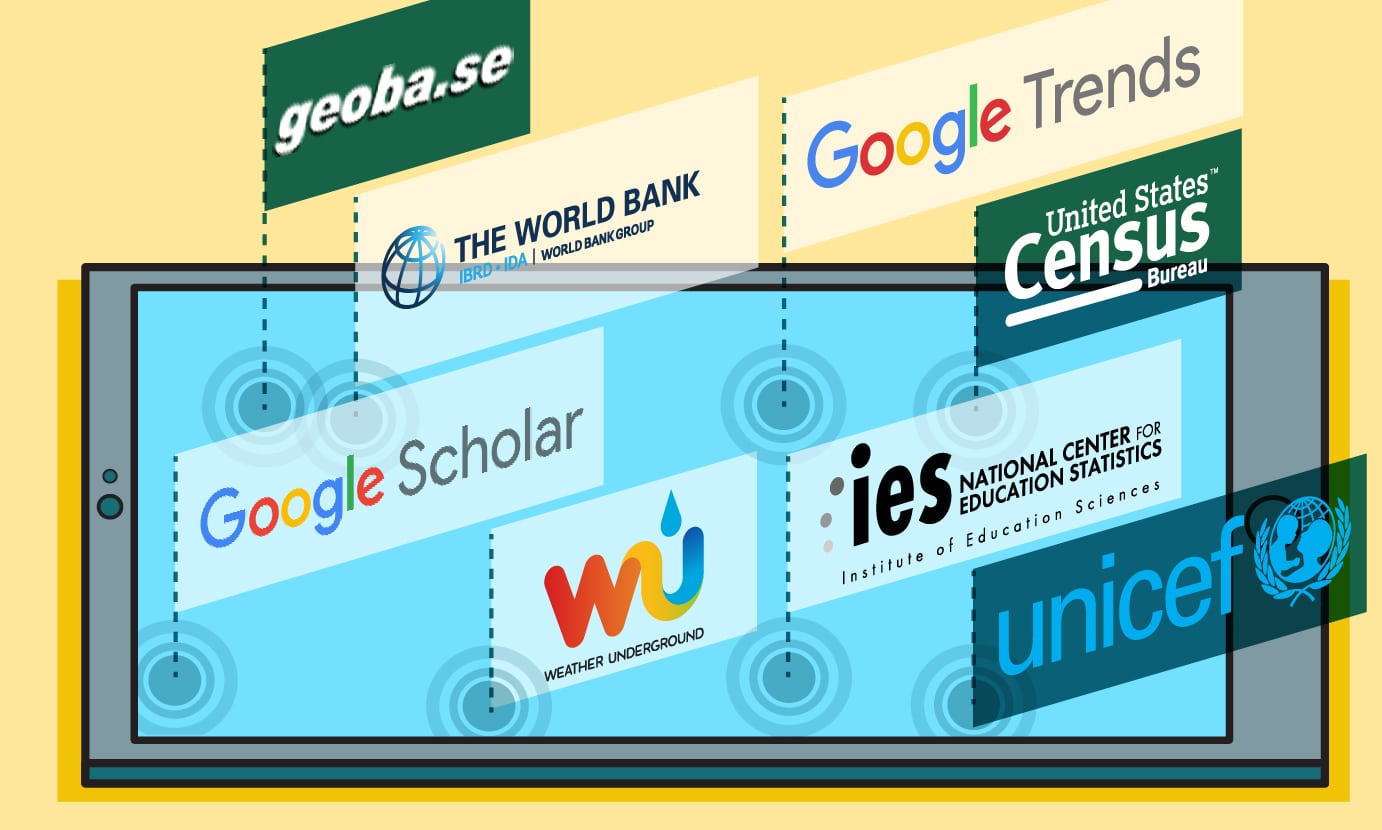
- Geob.ase
- World Bank
- Google Trends
- The Census
- Google Scholar
- Weather Underground
- National Center for Education Statistics
- Unicef
Steer clear of Wikipedia when sourcing information for your infographic. Data from this site is not deemed as credible and will negatively impact infographic SEO value.
SEO Infographic: Choose an Optimized Keyword or Keyword Phrase
The next part in boosting infographic SEO is to pick an optimized keyword that will serve as the focus of this visual form of marketing. The message itself should support a singular keyword, or in boostddddddddddddddsome instances, a singular keyword phrase. The goal is to land the infographic on the front page of Google when people search for your optimized keyword.
After using keyword research to pinpoint an optimized keyword or phrase, it should be used several times throughout the infographic.

- Infographic’s URL: your infographic needs to sit on a landing page, and this page needs to have an URL that is optimized with the focus keyword or phrase
- Headline: The infographic’s headline should be catchy and include the target keyword or phrase
- SEO title: Go into the content management system and set the SEO title to include the target keyword or phrase
- Meta description: Create a two- to three-sentence meta description that clearly outlines what the infographic is about and make sure to include the optimized keyword or phrase
- Headings: The infographic should include at least one H1 and multiple H2 headings that include the target keyword or phrase
- Image filenames: All images used within the infographic should be saved and uploaded with filenames that include the target keyword or phrase
- Image alt tags: All images used within the infographic should have image alt tags that include the target keyword or phrase
SEO Infographic: Optimizing the Infographic’s Page
You can also increase infographic SEO value by ensuring the page on which it’s published has a decent word count. Google and other search engines are huge fans of long-form content. This means your infographic’s page should have at least 1,000 words. And as mentioned before, there should be a moderate use of optimization throughout the 1,000 words.
There are several ways to create long-form content for your infographic. You can start by creating a 100- to 400-word intro. This intro should clearly outline what the infographic is about, and it should be placed before the infographic itself. It’s usually best to include interesting statistics and questions in the intro to spark the interest of the audience.
Following the infographic, you can include more blocks of text to get the word count up to 1,000. This is where you will go into further detail regarding the information presented in the infographic. Take for example you quote a statistic. In the information presented below the infographic, you can discuss where the statistic came from and what it means in relation to the message you are sharing.
If you ever need assistance with this part, IGW has a killer on page SEO service.
Improve Page Load Time and Bounce Rate
Also important is the load time of the infographic’s page. If the page takes more than a couple seconds to load, this will significantly negatively impact its SEO value. Google is all about a user-friendly experience. The longer it takes a page to load, the less likely Google is to recommend it to searchers.
Similar to page load time, you’ll want to look at your page’s bounce rate. A high bounce rate is an indication to Google that people aren’t finding the infographic to be of much value, which will reduce the likelihood of Google showcasing your infographic in search results.
Include Social Sharing Buttons

Include a Header Image
Another way to boost infographic SEO is to include a header image. This picture is going to sit at the top of the page on which the infographic is published. It is not a part of the infographic itself. It sits separately above the introduction. Make sure the header image has a filename that includes the optimized keyword or phrase as well as relevant image alt tags.
Check Image Resolution
To boost infographic SEO, you will also involve checking the resolution of the infographic across a variety of devices and browsers. Search engines look favorably on infographics that have high resolution regardless of the device, screen size, and browser they are being viewed on.
Use an Embed Code
Furthermore, and extremely important for boosting infographic SEO, is the use of an embed code. This makes it easy for people to share your infographic on their own sites, which is crucial for acquiring backlinks with infographics.
Perform Google Reverse Image Search to Build Backlinks
You can perform a Google reverse image search to see if people are using your infographic without linking back to your page. If they are, reach out and ask them to include the embed code to ensure you build a backlink for each and every time someone else uses it within their own content. If they refuse to link back to your site, ask them to remove the infographic from their own page.
SEO Infographic: Use Analytics to Track Infographic Success
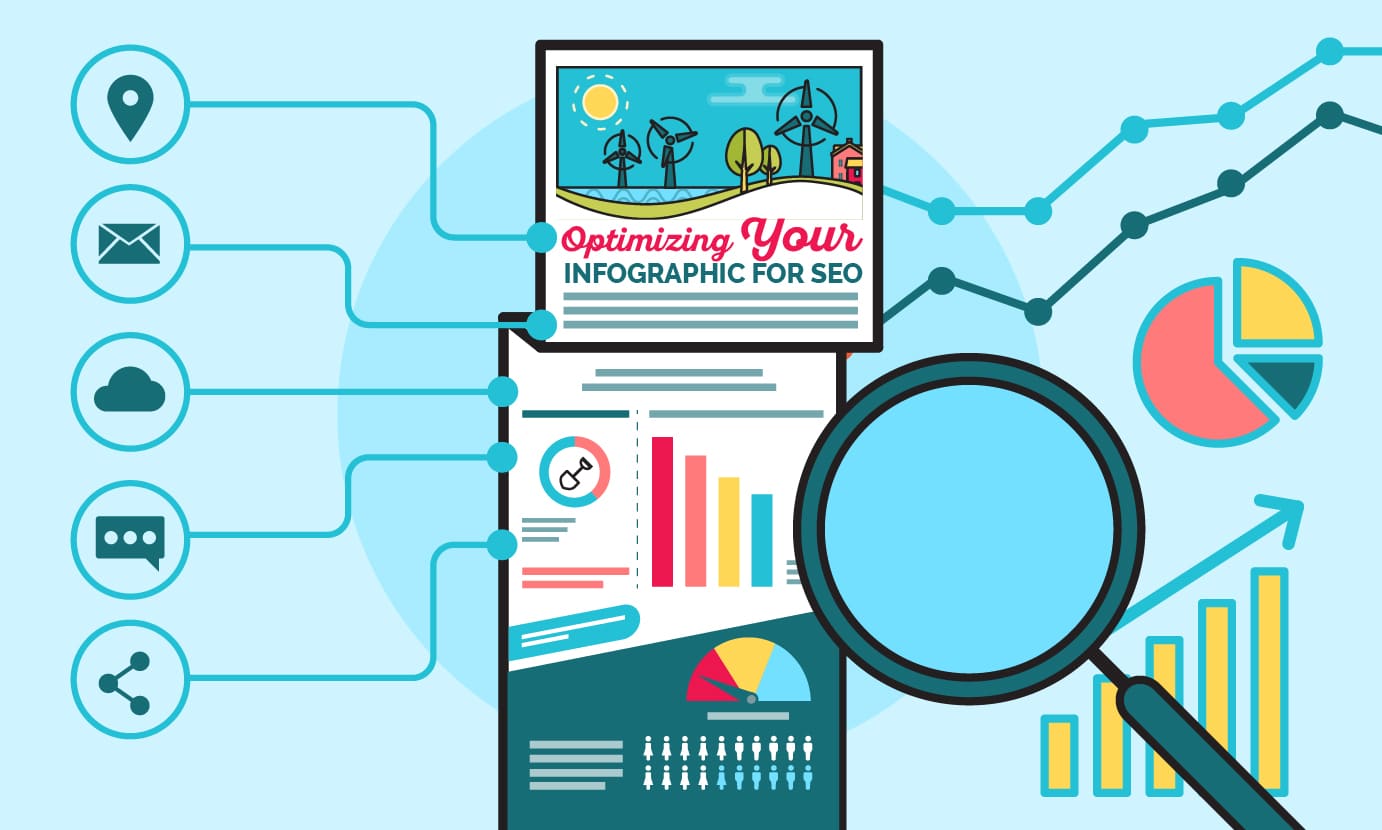
The Takeaway
Creating a quality infographic is only half the battle when it comes to boosting infographic SEO. Your use of image alt tags, social sharing buttons, an embed code, and much more will all influence how well your infographics perform from an SEO standpoint.
Here at IGW, we understand how to boost infographic SEO, and we are ready to help your brand build an infographic SEO strategy that results in a competitive edge. Contact us to discuss how our infographic services can help you.
Our on page SEO services offering is also second to none in the industry.

